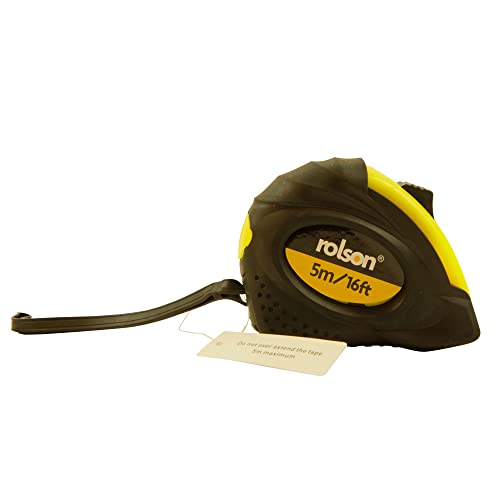Yes, tape measures can be used for body measurements
Tape measures are commonly used for measuring various objects and distances, but they can also be used for taking body measurements. In fact, they are often the preferred tool for accurate and consistent body measurements in a variety of industries, such as fashion, fitness, and healthcare. In this article, we will explore how tape measures can be used for body measurements, the benefits of using them, and some tips for achieving accurate results.
Measuring body parts with a tape measure
Using a tape measure for body measurements is relatively simple and requires little to no training. However, it is important to follow a few guidelines to ensure accurate and consistent results. Here are a few key steps to follow when using a tape measure for body measurements:
- Choose the right type of tape measure: There are various types of tape measures available, but for body measurements, a flexible tape measure is recommended. These types of tape measures are typically made of fabric or flexible plastic, allowing them to conform to the contours of the body and provide accurate measurements.
- Find a flat surface: It is best to take body measurements on a flat surface, such as a table or the floor. Make sure the surface is clean and free from any obstructions that could affect the accuracy of the measurements.
- Wear appropriate clothing: For accurate body measurements, it is important to wear tight-fitting or form-fitting clothing, or to measure directly on the skin. Loose or bulky clothing can add extra inches, resulting in inaccurate measurements.
- Take measurements at the right locations: Depending on the purpose of the measurements, there are specific areas of the body that need to be measured. For example, when measuring for clothing size, key areas to measure include the chest, waist, hips, and inseam. It is important to be consistent and measure at the same locations each time.
- Record the measurements: As you take each measurement, make sure to record the results in a consistent and organized manner. This will help you keep track of measurements over time and ensure accuracy.
The benefits of using a tape measure for body measurements
Using a tape measure for body measurements offers several benefits over other measurement tools or methods. Here are some of the key advantages:
- Accuracy: Tape measures are designed to provide precise measurements, especially when used correctly. This is important when it comes to body measurements, as even small variations can have an impact on the fit and comfort of clothing or the accuracy of fitness goals.
- Consistency: By using a tape measure, you can ensure consistent measurements each time. This is particularly important when tracking progress over time, such as with fitness or weight loss goals.
- Flexibility: Tape measures are flexible and can easily conform to the contours of the body. This makes it easier to measure curved or irregular surfaces, ensuring accuracy and reliability.
- Portability: Tape measures are compact and lightweight, making them easy to carry and use in various settings. Whether you are measuring for clothing, fitness, or healthcare purposes, a tape measure can be a convenient tool to have on hand.
- Cost-effective: Tape measures are generally inexpensive and widely available, making them a cost-effective option for body measurements. They are also durable and can withstand regular use.
Tips for achieving accurate body measurements with a tape measure
To ensure accurate body measurements when using a tape measure, here are a few additional tips to consider:
- Measure at the right time: For consistent results, it is recommended to measure at the same time each day or week. This can help account for fluctuations in body size due to factors such as hydration, digestion, or time of day.
- Take multiple measurements: To ensure accuracy, it can be helpful to take multiple measurements at each location and then calculate an average. This can help eliminate any potential errors or inconsistencies.
- Use a mirror or ask for assistance: When measuring hard-to-reach or awkward areas, using a mirror or asking for assistance can help ensure accurate measurements.
- Avoid pulling too tightly or too loosely: When measuring, be careful not to pull the tape measure too tightly or too loosely. It should be snug against the body, but not so tight that it compresses the skin or distorts the measurement.
- Keep the tape measure level: Make sure the tape measure is level and not tilted or slanted when taking measurements. This can help ensure accuracy and consistency.
Tape measures can indeed be used for body measurements, and they offer several benefits over other tools or methods. With a few simple steps and guidelines, you can achieve accurate and consistent measurements for various purposes such as clothing sizing, fitness tracking, or healthcare assessments. By choosing the right type of tape measure, using it correctly, and following some additional tips for accuracy, you can rely on tape measures as a reliable tool for body measurements.






